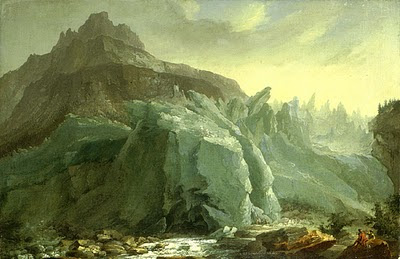
I have been really remiss in keeping up with my "letter writing," which is my way of describing a blog. Long ago, I used to write long letters to friends. That was when I was living and working in far-away places (mostly in the Far East -- what a quaint term that now seems). The letters were a way of keeping friends and family up to date on what I was seeing and thinking about. If I sent out half a dozen letters at once -- and, indeed, I did have that many correspondents back then -- the content of the letters would be more or less the same.
How much could I vary my impressions of being totally overwhelmed by the subway stations in Tokyo? That was shortly after my arrival there. I had signed up for a Japanese-language course at the Naganuma language school (which a Google inquiry tells me is still in business). It was an evening class, and I went to Shibuya after work. (I was an editor at the University of Tokyo Press.) "Take such-and-such exit," I was told, "and walk up the hill. Fifteen minutes." Shibuya Station is one of the busiest subway stations in Tokyo, and at rush hour it was bedlam. (It was only later, when I had to navigate the train stations of India, that I encountered larger crowds at rush hour.) All the exit signs were of course in Japanese back then; in the meantime, so I've been told, there is much more English signage to be found in Tokyo. Still, even today I defy anyone who has just arrived in Japan and has learned very few Japanese characters to find the right exit at Shibuya Station. Perhaps it's a feature of the internet, but I notice that the Naganuma school tries to be access-friendly these days.
 I digress. I wanted to write something about the sublime, with which I have been struggling for over a month, trying to write a decent scholarly article on the so-called "pre-Kantian sublime." Really, it's all about Bodmer and Breitinger again, with a dash of Goethe and Fuseli thrown in. Thus, it's not as if I don't have something to blog about, but the academic exercise demands a narrowness that is at odds with the freedom of posting one's thoughts.
I digress. I wanted to write something about the sublime, with which I have been struggling for over a month, trying to write a decent scholarly article on the so-called "pre-Kantian sublime." Really, it's all about Bodmer and Breitinger again, with a dash of Goethe and Fuseli thrown in. Thus, it's not as if I don't have something to blog about, but the academic exercise demands a narrowness that is at odds with the freedom of posting one's thoughts.
It was a visit to Chelsea the other evening, however, in particular the sight of some really nausea-inducing works, that deepened my thinking about the sublime. These photographs, including the one at the top and at left, are by Coke Wisdom O'Neal. According to the gallery's propaganda, "O'Neal has become known for his monumental plywood boxes, where people are invited to climb in an be photographed." The new series, however, marks a "significant" change: "What was once a project about space, identity, and identification has become a venture exploring anonymity, constraint, and escape." Gallery-speak.
It was Edmund Burke who first associated physiology with the sublime, in particular feelings of pain, because of the danger the sublime object represents, for instance, such grand natural phenomena as the Alps. A tsunami or a flood wouldn't count, because both represent real danger, but the portrayal of such phenomena would evoke in us the feeling of danger, while at the same time we would be aware that we were safe.

On a gut level, the feeling of revulsion I experience with O'Neal's works would seem to corroborate Burke: looking at these paintings, one seems to feel the danger represented by situation the models are in. Of course, I am not trapped in one of the plexiglass boxes. On a reflective level, however, which is where Bodmer invites us to go in our contemplation of art, I am divided. I wonder to what purpose O'Neal chooses to represent such "human action." Is it to make us reflect about freedom, which would be commendable?
According to the gallery press release, the bodies on view in these photographs are "forever entombed in a static, yet performative, state." That is not much fun to think about.


2 comments:
Pre-Kantian sublime is something I have never thought of much. So much of what we consider "sublime" now, ie Friedrich and the works of Hoffmann etc. would be post-Kantian?t
Well, the sublime had to start somewhere before Kant! I am not sure that Kant scholars would speak this way, but I think that Kant articulated "subjectivity," which had been emerging as a psychological category in the 18th century. Before mid-18th century, at least in Germany, poetry followed rules of "objectivity," based on neo-classical standards of proportion, symmetry, rationality, and so on. The breakthrough to subjective standards in art, both in the production of art and in the judgment of it, was a work in progress in that period, of which Kant represents the culmination. The sublime in art and nature was part of the discourse. Kant, however, divorced the aesthetic feeling from art itself. That is to say, though perception is subjective, the fact that all of us can agree that we are seeing the same object (and it doesn't have to be art), argues, in Kant, for a common cognitive apparatus. Because we feel, because of our ability to respond subjectively, we can think and make judgments about the world.
Post a Comment